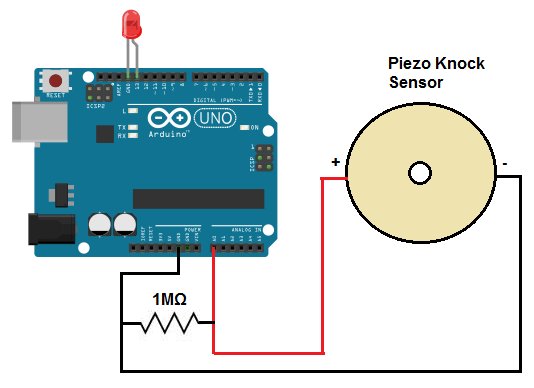

It is like an electromagnetic speaker, where a changing input signal produces the sound, rather than producing a tone automatically. A passive buzzer requires an AC signal to make a sound. Skill level: Beginner As a teacher, there are many things related to student contact that can cause stress, but two things I can address with this project are both proximity-related. An active buzzer will generate a tone using an internal oscillator, so all that is needed is a DC voltage. The ezBuzzer (easy buzzer) library is designed to solve that problems and make it easy to use for not only beginners but also experienced users. USB Cable (to connect the Arduino to the computer) HC-SR04 Ultrasonic Sensor. I inserted a battery between ground and the negative side of the pot and now get good contrast with.
#Arduino piezo tricks how to
I'm trying to implement a car warning sound using a piezo buzzer and an ultrasonic sensor.If an object is 50 to 30 cm away, it will sound for 1 second and try to turn off the sound for 1 second, but I can't think of a way to implement this code. When using a piezo buzzer, beginners usually run into the trouble that buzzer code blocks other Arduino code because of delau () function. Biasing it with a negatice voltage will do the trick. Arduino (I use the Arduino Uno) 1 Solderless breadboard 1 1 Mohm Resistor 1 Piezo transducer (aka buzzer) 1 Jumper wires 4 5.1V Zener diode (for extra protection) 1 No spill stopper for a to-go coffee cup How to set up the Circuit: This is a really simple circuit to setup, below are step-by-step instructions and a breadboard.


 0 kommentar(er)
0 kommentar(er)
